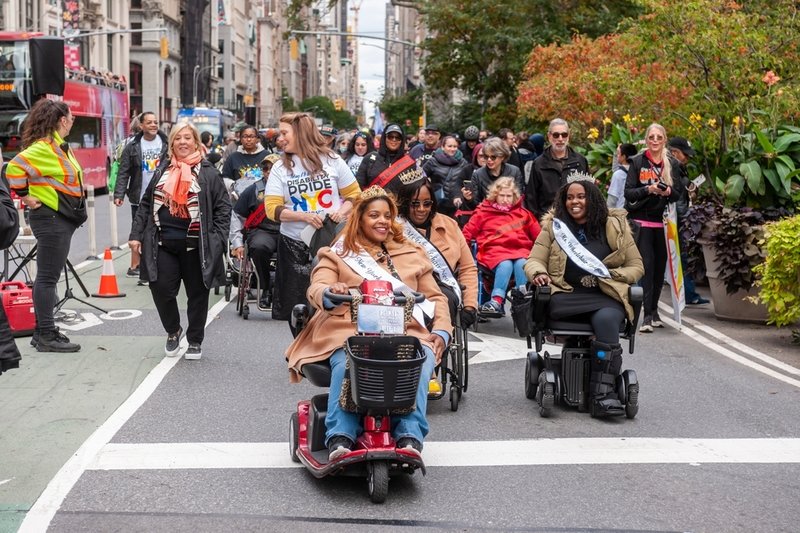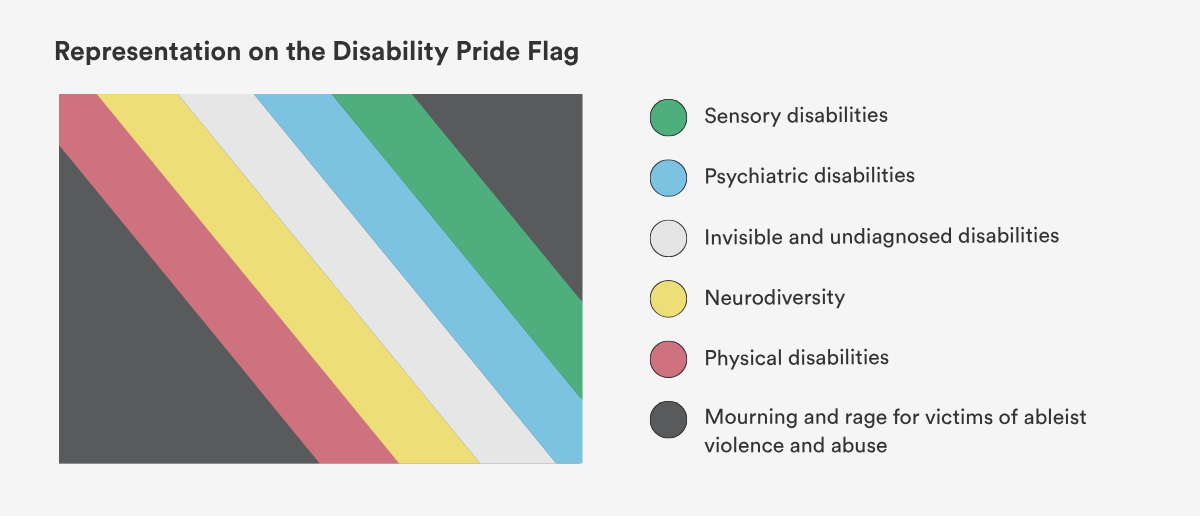Disability Pride Month Celebrates 35 Years of the ADA
Reflecting on advocacy and progress for disability rights
Blog Post

July 25, 2025
July is Disability Pride Month and celebrates the achievements, experiences, and history of the disability community. It also commemorates the signing of the Americans with Disability Act (ADA), a landmark piece of civil rights law that was passed 35 years ago this month. The road to the ADA was not without obstacles, and its passage represents decades-long advocacy and protest by the disability community to highlight the injustice faced in their daily lives. Disability Pride Month is a good time to reflect on how far we have come and how much more progress we need for a truly inclusive United States.
Disability Pride Month started with a day of celebration held in Boston in 1990. The first parade was in Chicago in 2004, and the first official Disability Pride Month didn’t occur until 2015, the same year as the 25th anniversary of the ADA. Each year, Disability Pride Month has a theme to highlight important topics in the community. This year’s theme is “We Belong Here, and We are Here to Stay,” signifying that "people with disabilities are a vital part of every community. Not someday. Not conditionally. Now."
The disability rights movement in the United States gained momentum in the 1800s, when formal education for Deaf students began and braille was invented. Still, it wouldn’t be until 1973 that the first major piece of legislation supporting disabled people would be passed—the Rehabilitation Act of 1973, which prohibits discrimination based on disabilities for federally-funded programs and programs run by federal agencies. But the Rehabilitation Act would not go into effect immediately. In fact, it took the longest sit-in in U.S. history for the Act to finally be enforced. In 1977, four years after the bill was passed, 150 people in several cities occupied federal buildings in order to pressure the federal government into enforcing Section 504 of the Rehabilitation Act. The sit-in lasted 25 days and would later be known as the 504 Sit-ins. This would not be the last major protest done by members of the disability community. In March of 1990, the Capitol Crawl assembled more than 700 people in front of the U.S. Capitol demanding passage of the ADA. Sixty of these protestors shed their various mobility aids and crawled up the stairs of the Capitol. This and other advocacy done by members of the disability community contributed to the passing of the ADA in 1990, marking the first comprehensive civil rights law regarding disability in the world.
It would take four years after the first official Disability Pride month for Ann Magil, a writer with cerebral palsy, to design the Disability Pride flag in 2019. After attending an event celebrating the ADA, which Magil found lackluster and didn’t properly bring attention to the disability community, she was inspired to create the flag. Magil viewed it as a way to raise awareness and show pride in the disability community. The first iteration of the flag contained a black background with multi-colored zigzagging stripes. Magil noted that the design represented "disabled people have[ing] to maneuver around all the barriers we face. We have to go this way, and then we have to go that way… that’s how we move through the world." But when the flag was viewed on different electronic devices, the colorful zigzagging stripes caused a strobe light effect, which could trigger seizures, migraines, and other issues. Working with others in the disability community, Magil redesigned the flag, which now features more muted colors and straight lines. As Magil explains, "I think it’s even better this way because it truly represents the community because the community came together to solve a problem."
Disability Pride Month is not just a time to celebrate but also to take meaningful action. That starts with listening to disabled voices and uplifting their stories, experiences, and perspectives. That can be anything from consuming media that features positive representations of disabled people to joining in advocacy efforts. If you’re not disabled, work to be a good ally to those who are. Disability pride should not be confined to only the month of July. Let Disability Pride Month be the start of centering disabled voices in our lives and not the end.
